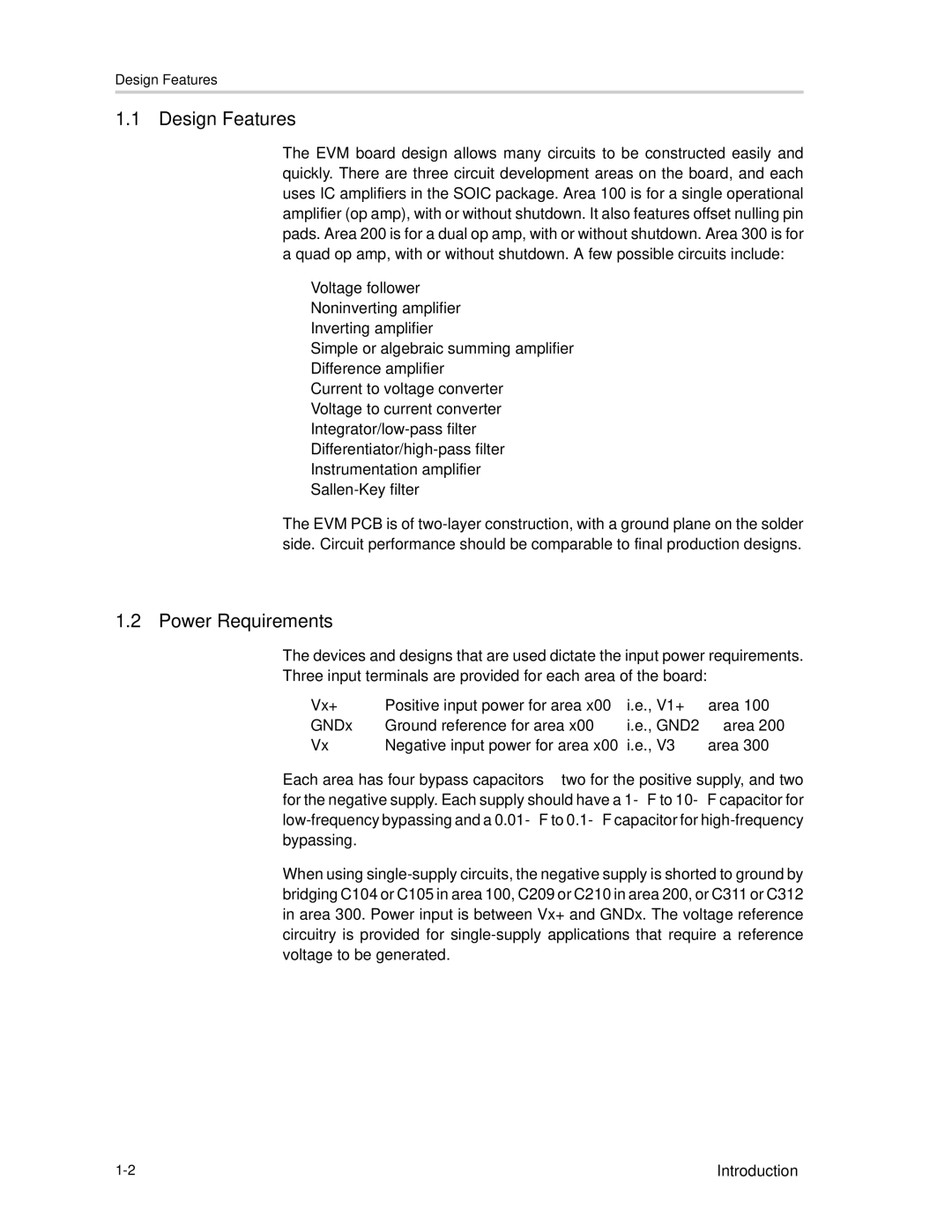SLOU061A specifications
Texas Instruments SLOU061A is a comprehensive technical document that provides detailed information about one of the company's key offerings in the realm of integrated circuits. This document highlights important features, technologies, and characteristics of the specified device, ensuring users can make informed decisions during the design and implementation of their projects.One of the main features of the Texas Instruments SLOU061A is its versatility in application. The device is designed to cater to a wide range of electronic systems, including consumer electronics, industrial equipment, and automotive applications. This versatility is further enhanced by its ability to operate in various environments, withstand extreme temperatures, and support different input/output configurations.
The SLOU061A incorporates advanced semiconductor technologies that facilitate improved performance and efficiency. The device is built on a state-of-the-art fabrication process, which not only enhances its reliability but also minimizes power consumption. This is crucial in today's market where energy efficiency is a significant concern for manufacturers and end-users alike. The integrated power management features allow for dynamic power scaling, helping to optimize energy usage in real-time.
In terms of communication interfaces, the SLOU061A supports several protocols, including I2C, SPI, and UART, thereby allowing seamless integration with various microcontrollers and processors. This compatibility ensures that designers can easily incorporate the device into existing systems or create new designs without the need for significant redesign efforts.
Another notable characteristic of the SLOU061A is its robust protection features. The device is equipped with built-in safeguards against overvoltage, overcurrent, and thermal events, ensuring longevity and reliability in application. This makes it an ideal choice for projects where durability is paramount.
Lastly, Texas Instruments' commitment to customer support is evident in the documentation provided alongside SLOU061A. The datasheets, application notes, and reference designs serve as valuable resources for engineers and developers, providing guidance and best practices for implementation.
In summary, Texas Instruments SLOU061A is a feature-rich integrated circuit that stands out for its versatility, efficiency, communicative capabilities, and robust protection features, making it an excellent choice for various electronic applications across multiple industries.
